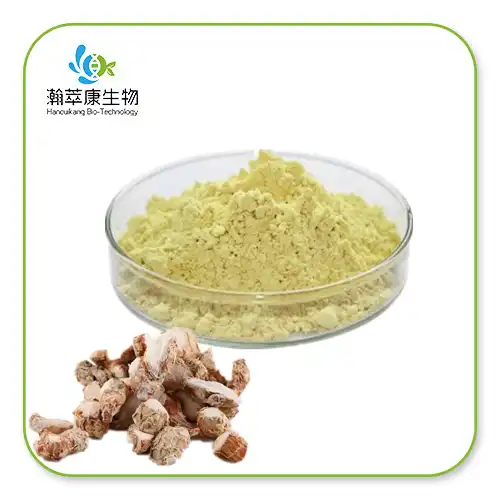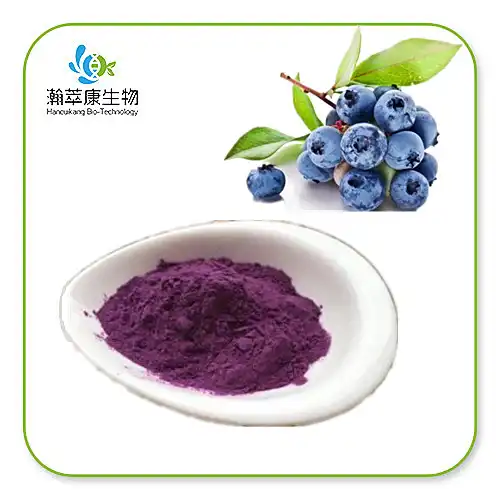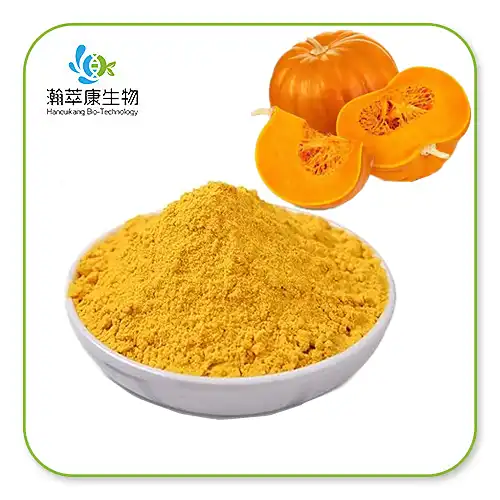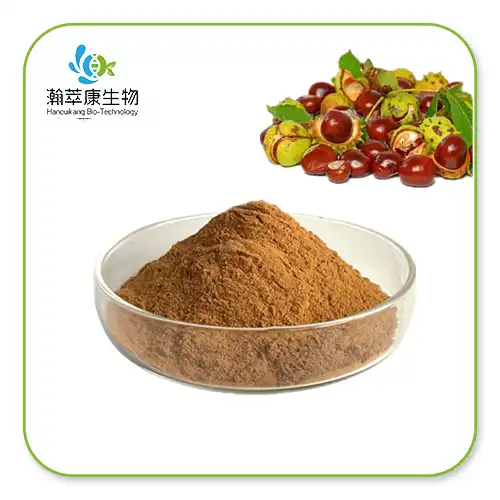What is Ruscus aculeatus root extract in skin care?
2023-11-21 11:18:46
Ruscus aculeatus, commonly known as butcher's broom, is a plant that has been used for centuries in herbal medicine. The root extract of Ruscus aculeatus has become increasingly popular as an ingredient in skin care products due to its potential benefits for the skin. In this article, we'll explore what Ruscus aculeatus root extract is, its key components, how it works in skin care, as well as the research behind its skincare benefits.
What is Ruscus Aculeatus Root Extract?
Ruscus aculeatus is an evergreen shrub that belongs to the lily family. It is native to the Mediterranean region but can now be found throughout Europe and parts of Africa. The plant gets its common name "butcher's broom" from the stiff twigs that were once bound together to make brooms.
In skin care, it is the roots of Ruscus aculeatus that are valued for their beneficial properties. Ruscus aculeatus root extract contains a combination of steroidal saponins, flavonoids, and ruscogenins that provide antioxidant, anti-inflammatory, and vasoconstrictive effects when applied topically on the skin.
Also known as Butcher’s Broom Extract
Extracts of the Butcher’s Broom, an evergreen shrub found in Mediterranean countries
Contains anti-inflammatory and anti-irritant ingredients to help soothe the skin
Has astringent properties in them to help contract and clear the skin, often found in toners
Known for being able to provide anti-redness benefits


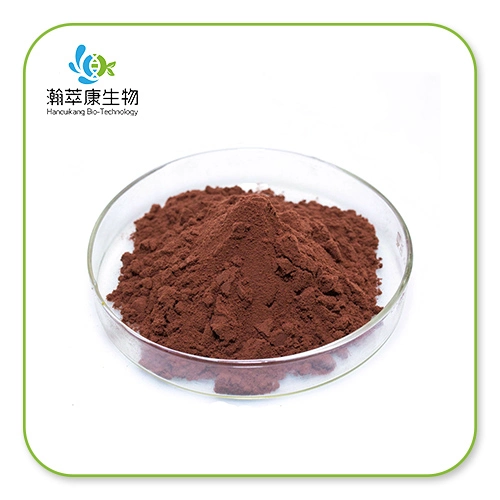
The key active components in Ruscus aculeatus root extract are
Ruscogenins: These are steroidal compounds that provide venotonic effects by constricting veins and improving circulation. The main ruscogenins found in butcher’s broom extract are neoruscogenin and ruscogenin.
Saponins: These compounds have surfactant-like properties that provide a gentle cleansing effect on the skin. The main saponins in the butcher’s broom are ruscin and ruscoside.
Flavonoids: These plant pigments are antioxidants that help protect the skin from free radical damage. Orientin, isoquercitrin, and astilbin are some of the key flavonoids.
Together, this unique combination of active ingredients in Ruscus aculeatus root extract make it beneficial for several skin concerns when used topically.
How Does It Work in Skin Care?
Ruscus aculeatus root extract has several mechanisms of action that make it effective for targeting common skin concerns:
Improves circulation and reduces puffiness: The ruscogenins have venotonic properties that constrict veins, improve circulation and blood flow. This helps reduce pooling of fluids and puffiness, especially under the eyes and on the legs.
Anti-inflammatory effects: The flavonoids provide antioxidant protection to help soothe inflammation. The saponins also have a mild anti-inflammatory effect. This helps reduce redness and swelling.
Firming and tightening: The botanical extract helps strengthen blood vessels and connective tissue, leading to a tightening effect on the skin. This can improve the appearance of sagging skin.
Cleanses and refines pores: The gentle cleansing action of the saponins removes dirt, oil, and impurities from the skin and pores. This clarifying effect helps minimize the appearance of pores.
These diverse mechanisms make Ruscus aculeatus a multi-tasking skincare ingredient that can address several concerns simultaneously when used properly in formulations.
Benefits of Ruscus Aculeatus Root Extract for Skin
Due to its venotonic, anti-inflammatory, antioxidant, and cleansing properties, Ruscus aculeatus root extract has been shown to provide several benefits for the skin:
Reduces under-eye puffiness and dark circles
Improves appearance of varicose veins
Firms sagging skin and improves elasticity
Helps minimize pore appearance
Soothes red, inflamed skin
Protects against free radical damage
Promotes healthy circulation and radiance
The compounds in the root extract complement each other to provide these skin enhancing benefits. For example, the ruscogenins improve circulation while the saponins cleanse pores and the flavonoids reduce inflammation. Let's look at some of the key research on Ruscus aculeatus root extract for skin:
Research Studies
In a 2019 double-blind, placebo-controlled study published in the journal Clinical, Cosmetic, and Investigational Dermatology, Ruscus aculeatus root extract was tested for its effects on under-eye bags and dark circles. The 49 female participants applied a cream with the root extract or placebo twice daily for 4 weeks. By the end of the study, the Ruscus aculeatus group showed a 72% decrease in under-eye bags compared to 36% in the placebo group. Dark circles were reduced by 51% in the Ruscus aculeatus group and only 18% in the placebo group. Researchers concluded that the botanical extract improves microcirculation and venous drainage to significantly reduce puffy eye bags and darkness.
A 2015 study in BioMed Research International evaluated creams with Ruscus aculeatus root extract on people with facial redness and rosacea. After 4 weeks of use, redness severity scores reduced by over 60% in the Ruscus aculeatus groups compared to 30% reduction in placebo groups. Participants also self-assessed their redness as improved. Researchers attributed the anti-inflammatory action of the root extract flavonoids for the positive effects.
An in vitro study in Phytotherapy Research tested Ruscus aculeatus root extract on human skin cells. The extract exhibited antioxidant activity that helped protect the cells from oxidative stress. The researchers suggested that the skin benefits of the extract partially come from its ability to reduce free radical damage.
Overall, the current research shows promising results for the use of Ruscus aculeatus root extract in targeting common skin complaints like puffiness, redness, sagging, and oxidative damage. More studies are still needed, especially larger scale human clinical trials, but the initial research is very encouraging.
How is Ruscus Aculeatus Root Extract Used in Skincare?
In skin care products, you'll typically find Ruscus aculeatus root extract used at concentrations between 1-3%. It can be found in a wide range of formulas:
Creams and serums: The extract is combined with hydrators like glycerin and silicone to improve circulation and firmness. Often targeted for the eye area.
Toners: Watery formulations use Ruscus aculeatus extract for its pore refining abilities. Also improves radiance.
Cleansers: The extract’s saponins allow it to provide gentle cleansing activity in facial washes and scrubs.
Anti-aging products: Combined with peptides and antioxidants to combat wrinkles, sagging skin and age spots.
Varicose vein creams: Often used at higher concentrations between 5-10% to improve appearance of spider veins on legs.
The root extract blends well with other traditional skin care ingredients like vitamin C, niacinamide, hyaluronic acid, and retinol. Look for it in products targeting puffy eyes, sagging skin, enlarged pores, redness, spider veins, and antioxidant protection.
Since Ruscus aculeatus root extract has many beneficial properties, it is considered a helpful addition to skin care routines for all skin types. However, as with any active ingredient, perform a patch test first, especially if you have sensitive skin. Start by using products containing the extract once or twice a day and monitor for any irritation or adverse reactions.
Benefits to the Skin
The main benefit to the skin—constricting blood vessels—makes butcher’s broom a wonder in eye creams. Dark circles are often caused by the reddish-blue blood vessels under the eyes, which become more obvious with age, and also when you’re tired or suffering from allergies. The combination anti-inflammatory and blood-vessel-constricting properties of butcher’s broom attack both sides of the issue, helping to calm and conceal any unwanted darkness under the eyes.
Here are some more of the benefits you can expect:
Reduces swelling: In addition to calming the skin under and over the eyes, butchers broom can also relieve itching, swelling, and pain anywhere on the skin.
Vasoconstrictor: Constricts blood vessels, helping to fade dark circles. Also great for varicose veins. Rosacea sufferers can also benefit from this extract as it helps reduce the visible capillaries and redness.
Gentle: This is a great product for those with sensitive skin. When used topically, it is not linked with any type of irritation.
Anti-inflammatory: Like most plant extracts, butchers broom helps calm inflammation, making it helpful in skin conditions like acne, eczema, and psoriasis. So powerful are the anti-inflammatory properties that the extract has been used in topical ointments to treat the pain and swelling of arthritis and rheumatism.
Anti-itch: Butchers broom is recommended for hemorrhoids not only because it calms swelling, but because it can also ease itching and burning. It can also be used as a supportive therapy for other types of skin irritations.
Astringent: An astringent shrinks body tissues—in the skin, that usually means pores. Contracting the skin around the eyes can also help them look more awake. The pore-reducing quality of butcher’s broom helps skin appear smoother overall, and is also beneficial for oily and acne-prone skin.
How Does Butchers Broom Work?
According to American University in Washington, DC, butcher’s broom activates receptors that stimulate the release of nor adrenaline to increase vascular tone and constrict blood vessels. The constriction helps to get the blood moving and reduce pooling. Butcher’s broom contains flavonoids that also support normal circulation and strengthen blood vessels.
Butchers Broom, Varicose Veins, and Hemorrhoids
Varicose veins and hemorrhoids are common and associated with a loss of blood vessel integrity. Thus, supplementing with herbs, such as horse chestnut and butcher’s broom, that support the vascular system may help. Butcher’s broom is believed to improve both conditions by promoting healthy micro-circulation, capillary flow, and strengthening connective tissue. It’s even been approved by the German Commission E (Germany’s version of the FDA) as a remedy for hemorrhoids and a 1999 clinical trial supported butcher broom’s reputation as a hemorrhoid remedy.
Conclusion
In conclusion, Ruscus aculeatus root extract is a multifunctional ingredient that research shows can improve several common skin concerns. Its key components like ruscogenins, saponins, and flavonoids provide venotonic, anti-inflammatory, antioxidant, and cleansing effects. By constricting blood vessels, reducing inflammation, protecting from oxidative damage, and refining pores, Ruscus aculeatus can help minimize puffiness, redness, sagging, large pores, and damage from free radicals. Look for it in a wide range of skincare products to take advantage of these skin enhancing properties.
Products with Ruscus Aculeatus Root Extract
Rueber Vicapteina THE LAB by blanc doux Oligo Hyaluronic Acid Relief Sheet Mask Botanika Gel Para Piernas Venorelax Genové Fluidbase K Massada Avocado Anti-Wrinkle Cream Senteales Vitality Serum Biomed Anti-couperose Serum Capillary Cure Biomed Capillary Cure Serum Anti-Couperose Coast Sydney Botanicals Hero Balance Serum: Luminosity AHA Exfoliator Genové K Crema Antiojeras Vienna Collagen Eye Pads Cucumber ANSALIGY Amber Eye Lift Patches With Amber Pellets Afrodita Active Boost Avatara Chill Out Face Mask Dermaviduals Eye Gel Plus Glow Lab Energising Eye Mask Mgc derma CBD Anti-Puffiness & Dark Circles Eye Serum STARSKIN Vip The Gold Mask™ Eye THE LAB by blanc doux Oligo Hyaluronic Acid 7 Multi-formula Pad Weleda Aceite Anticelulitico Weleda Cellulite Body Oil Botanika Gel Anticelulitico Lipo Reductor Dermacol Gold Eye Gel Dermiq Capilite Tx Diego Della Palma Lenitivo Soothing, Concentrato Disarrossante, Anti-redness Concentrate Dr. Wu Intensive Renewal Serum With Mandelic Acid 18% Lovren Ec3 L’Occitane En Provence Artichoke Body Scrub My Beauty Diary Hyaluronic Acid Mak MyCli Calmia Soothing Restorative Cream Rhonda Allison Vital Wound Relief vegetable beauty Iluminating Eye Serum ANESI BEAUTE A.h.a Aminocel Annmarie SkinCare Organic Anti-Aging Eye Cream Arcona Chamomile Balm™ Avatara Chill Out Face Mask Cosme Decorte Liposome Treatment Liquid Dior One Essential Eye Serum Functionalab Body Toning Goldfaden MD Plant Profusion Energetic Eye Cream Helena Rubinstein Prodigy Powercell Youth Grafter The Serum Laboratorios Viñas Rosaderm MINISO Hyaluronic Acid Essence Toner Porcelain Revive Makeup Cleanser Rhonda Allison Blushed Wine Gel ACM Rosakalm Anti-Redness Cream Biotherm Homme Force Supreme Eye Architect Serum DULÀC FARMACEUTICI 1982 Diosmin Deliplus Sensitive Crema Anti-Rojeces Dēpology Cica Redness Relief Nourishing Cleanser


